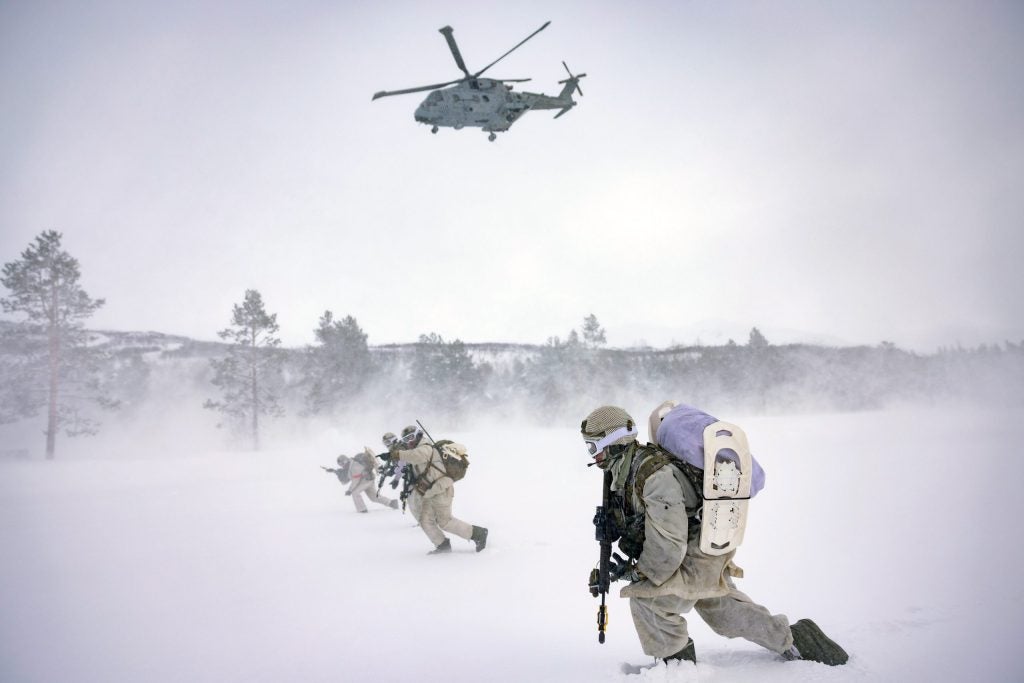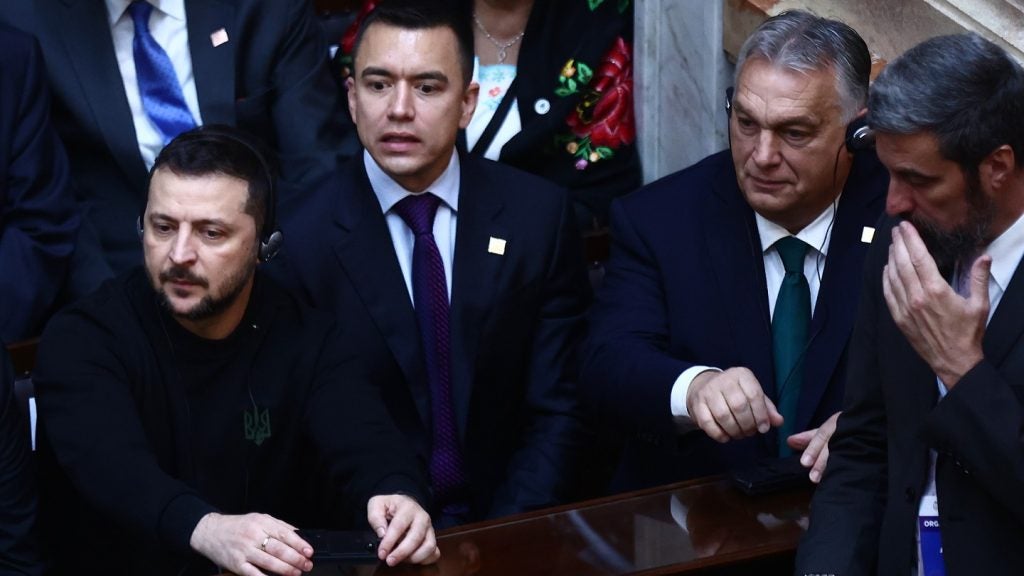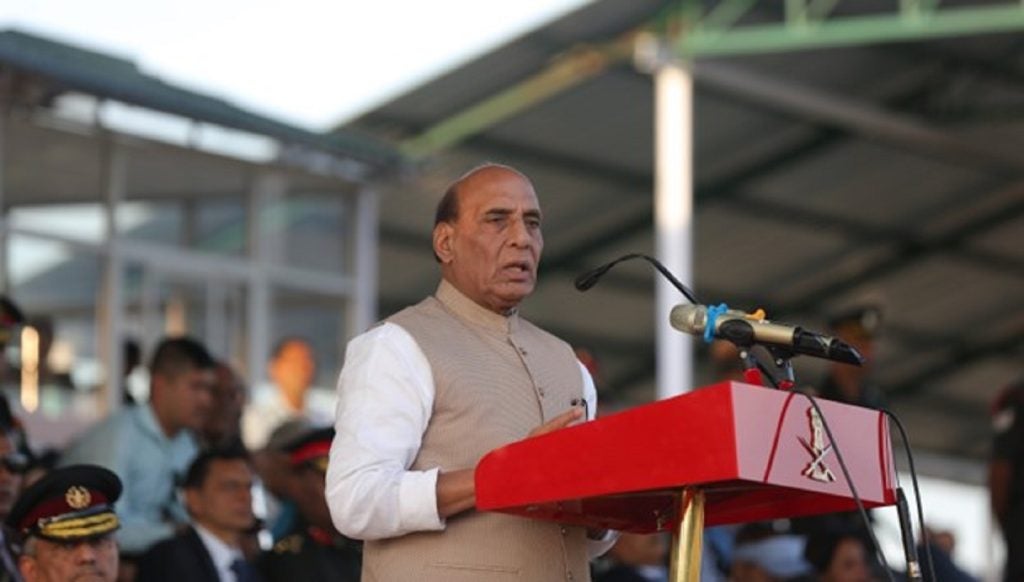The UK should prioritise military and strategic concerns in the High North instead of the Indo-Pacific region, said former Chief of Defence Staff Lord Graham Stirrup, in an interview accompanying the release of a House of Lords' report into the UK’s strategic position regarding the Arctic, 'Our Friends in the North' on 29 November.
The House of Lords International Relations and Defence Committee published the report following an inquiry begun in April 2023 focused on Arctic security threats and defence capabilities. According to to the report the the UK government has a growing interest in both the High North and the Indo-Pacific regions. However, the report expresses concern that the UK may not have sufficient military assets to support its increased focus on the Arctic alongside its growing interest in other regions such as the Indo-Pacific.
The report highlights the importance of the Arctic region for the UK's national security and economic interests, as melting ice opens up new shipping routes and access to natural resources. However, the UK's military resources are currently stretched thin, with a long-term deployment to the Indo-Pacific and the need to protect the nuclear deterrent.
The 'Indo-Pacific tilt' had been a burgeoning concern for the US Department of Defence in the years running up to the 2022 full-scale invasion of Ukraine by Russia. Previous to that attack, US strategic policy had prioritised the Indo-Pacific as a region for greater attention, with growing concern over containing China’s regional hegemony. However, pressing security concern for the UK that have evolved in closer theatres over recent years.
Neighbours in the High North
The report highlights the historical precedent that most major conflicts in Europe have included an Arctic element, and it suggests that any regional conflict between NATO and Russia would likely spill over into the Arctic. The report also emphasises the strategic importance of the Kola Peninsula, on Russia’s North-Western coast, particularly as the base for many of its nuclear forces, submarines, and bombers, which could be involved in the event of a broader conflict between Russia and Nato.
“One of the things that emerged from the inquiry and you will seen is that nobody really expects a war between Nato and Russia to kick off in the Arctic. Nobody expects that, [but] of course, you couldn't completely rule it out,” said Lord Stirrup. “But it is extremely probable that if there is some kind is sparking some kind of conflict between Nato and Russia, it will involve the Arctic to a considerable degree. So we have to be ready for that.”
The report recommends that the UK develop a comprehensive Arctic strategy that takes into account the region's unique geopolitical and environmental challenges. This strategy should include measures to enhance the UK's military presence in the region, as well as investments in research and development to support sustainable economic growth.
"It seems to me is, in the near term, at least, the priorities are going to be in Europe on the High North and the Atlantic."
Lord Stirrup
“The question for the government is going to be - and this will translate through into capabilities - what is really the most significant areas which we should be paying attention to militarily? Is it the High North, or is it Indo-Pacific? And my reply to that would be it should be the High North.
“In purely military terms, not in wider diplomatic, economic industrial terms. The Indo-Pacific is a key strategic region for us, but in pure in terms of pure military capability, given the kind of defence budget that we have, we're going to have to prioritise. It seems to me is, in the near term, at least, the priorities are going to be in Europe on the High North and the Atlantic.”
Stirrup suggests that the investment includes increased maritime capabilities, with a focus on the subsurface domain, but also air assets for reconnaissance and surveillance, as well as specialist ground capabilities, traditionally provided through the Royal Marines.
The report discusses the UK's acquisition of a new fleet of P-8A Poseidon aircraft in 2020 for anti-submarine warfare operations and the expected entry into service of a new fleet of three E-7 Wedgetail Airborne Early Warning aircraft scheduled to be delivered in 2024. These platforms are highlighted as essential for providing aerial and maritime surveillance and contributing to operations in the High North.
Arctic escalation and a larger Nato
“In the Arctic, in particular, we need to make sure that the capabilities and structures are in place that quite patently would be able to inflict unacceptable damage on an adversary, and to do that in as non confrontational a way as possible. Because, of course, we don't want to give rise to unintended consequences as a result of our actions, in terms of building up forces.”
The report notes that the accession of Finland and Sweden to NATO is likely to reinforce the Russian leadership’s perception of NATO “encirclement,” which could have implications for Russia's force posture in the Arctic, and goes on to highlight the strategic and organisational challenges presented by Finland and Sweden's NATO accession, including the need to increase training of land forces in cold weather conditions and the desire for Finland and Sweden to be part of the same Joint Force Command as Norway to consolidate Nordic defence cooperation and interoperability.
“So that's the challenge for military planners, for Nato planners, is how to make sure that Finland and hopefully Sweden are incorporated into Nato in a way that enhances deterrence in the high north without seeming overly provocative, bearing in mind that Russia is going to regard almost any Nato action as provocative.”
Based on witness evidence from the RAND corporation, report suggests that Finland and Sweden's NATO accession provides an opportunity for the UK to deepen its defence cooperation with the Nordic states, including increased intelligence sharing and learning from their Total Defense concepts, which emphasise “bolstering national preparedness and societal and psychological resilience in the face of sub-threshold threats”.











